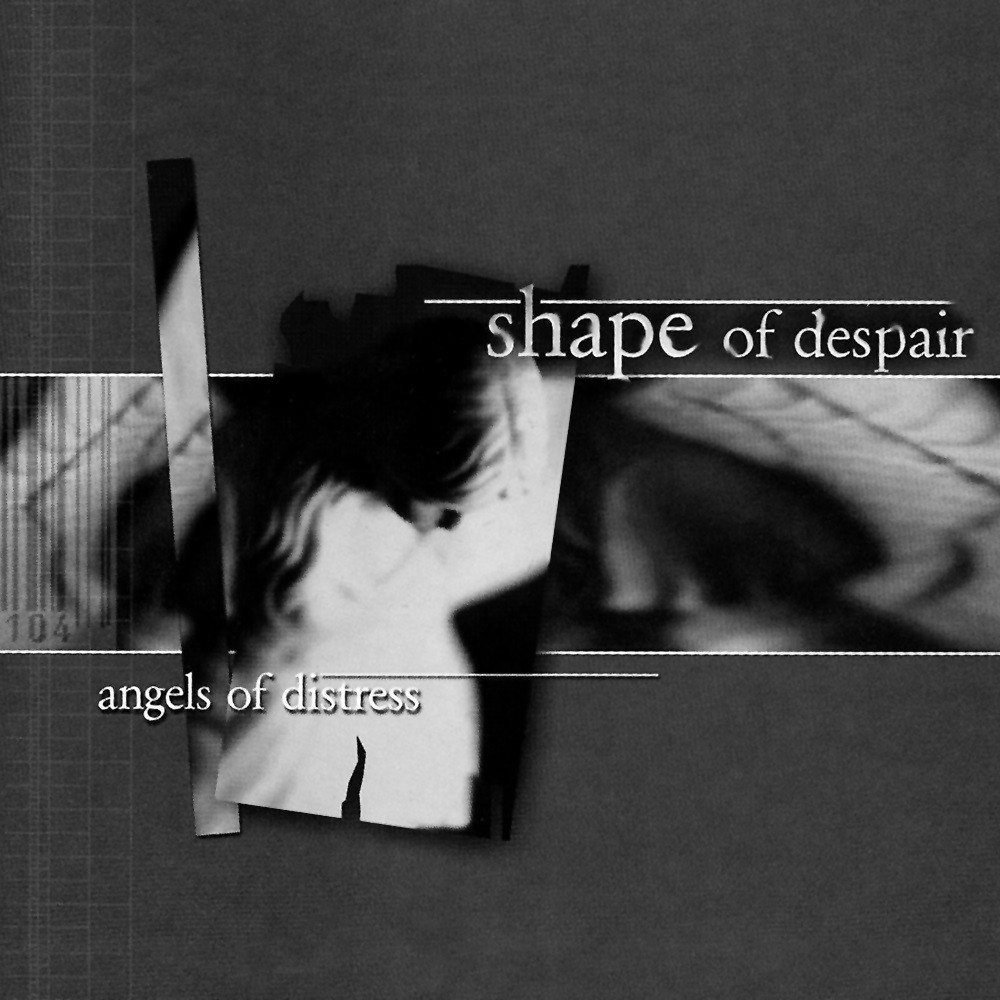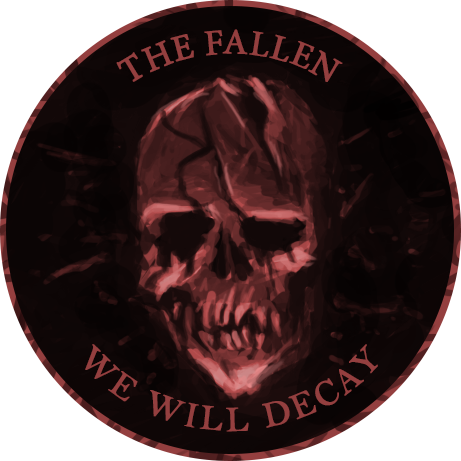Shape of Despair - Angels of Distress (2001)Release ID: 1932

As good as the amazing debut, despite a changed line-up and a cleaner sound. Beautiful music!
Shape of Despair’s sophomore album was more than likely going to be a huge disappointment for me. After all, I without hesitation labelled their debut release (2000’s Shades of...) the most emotionally affecting album I’ve ever heard in my life. My expectations for its follow-up were so immensely high that even a merely good album was likely to have me wallowing in discontent. The announcement that the band had already recorded this second album by mid-2001 filled me with both fanboy excitement and deep concern in equal amounts. Why the concern? Well, considering Jarno and Tomi spent close to five years working on most of the material found on the debut, the short turnaround for the sequel suggested they may not have spent as much time and effort crafting the new works. More potential for disappointment arose with the news that the Shape of Despair line-up had been modified significantly in the months following “my precious” Shades of..., with two of the many fantastic features that were so effective on the debut no longer part of proceedings. Toni Mäensivu’s deep, passion filled growls would not be heard again, as he’d packed his bags and moved to Lapland to expand his education, and session flutist Johanna Vakkuri was also no longer involved, taking away one of the features that made Shades of... so unique. I couldn’t help but be afraid that my recently crowned favourite band was about to descend from the throne as quickly as they’d ascended.
Hindsight tells me that I should never have worried! My concerns regarding the short turnaround where baseless, as it turns out all the material found on Angels of Distress was written by Jarmo between 1997 and 1999, suggesting it was very possible it would be of a similar quality to the debut. As for the line-up changes, my fears were allayed when I learnt of the replacements that had filled their shoes. Male vocals would now be handled by Pasi Koskinen of Amorphis, who despite being far more renowned for his smooth clean voice on albums like Elegy, had proven he had the sort of growl needed for funeral doom on Amorphis’ Tuonela album in 1999 (he’s brutal on track five Greed). When Jarno was asked in an interview how he convinced Pasi to join Shape of Despair given the success of his other band, the answer was simply that he finds it therapeutical to perform death growls every now and then. It may also have had something to do with the band’s other vocalist Natalie, whom he would marry shortly after joining. The fact that flute would not be utilised on Angels of Distress was also less worrying with the news that another session musician had been hired for the recording, this time being Toni Raehelme on violin. If anything, the violin seemed a more appropriate instrument for the colossal melancholy found in Shape of Despair’s work, and suddenly, I went from being mildly anxious that disappointment was approaching to being utterly convinced that the band were about to release another breathtaking album.
The first thing to say about Angels of Distress is that it is not Shades of... Part II. Yes, it is still gut wrenchingly slow and sorrowful funeral doom metal, but changes in instrumental focus and production result in a moderately different sound. There is far greater clarity in the recording, with the muffled guitars and slightly distant drums found on the debut replaced by a substantially clearer and less suffocating sound. The increased production works beautifully with the greater emphasis on symphonic layers and the newly introduced violins, and the guitars get more of an opportunity to break free from the mire. Toni Raehelme’s violin work is wonderfully subtle, never drawing attention to itself or pushing into the overly melodramatic, yet still adding further emotional gravitas to what would already be intensely touching music. There’s more variety to be found overall too, with the band occasionally breaking away from the strict rhythm they exclusively stuck to previously, and their more ambient side being given the chance to work its magic uninterrupted at a few distinct sections on the album. Pasi’s vocals are deep and ferocious, easily filling what I thought would have been a significant gap left by Toni’s departure, while Natalie’s vocals are used in a similar way to Shades of..., acting more as a backing instrument than an upfront voice. As before, her beautiful voice weaves in and out, adding an angelic and gothic touch, but she does finally get the opportunity to sing (as in actual lyrics) in ...to Live For My Death..., with the result being stunning as expected.
The symphonic prominence is evident right from the start of opening track Fallen, with soft layers setting a gloomy mood which the heavy doom riffs and crushing drum beats eventually accompany rather than replace. It’s a beautiful opening to the album, but it’s the title track where things really start to take form. The violin’s impact is immediately apparent on this track, and the way the band integrates doom, keyboards, and Natalie’s voice around it is mesmerising. As good as Angels of Distress is though, it’s tracks three and four that deserve all the attention, with both being in excess of fourteen minutes and both surely reaching the zenith of possibility when it comes to psychologically moving, blissful funeral doom. Quiet These Paintings Are was first heard on the band’s promo back in 1998, but the newer elements and the higher production values make this re-recording something special indeed. Piano intro, violin accompanied riffs, gorgeous melodies, passionate vocals, stunning ambient sections, it’s all there and I haven’t a hope of describing the result using words alone. Somehow, they managed to top it with ...to Live For My Death..., which is for me the highlight of Angels of Distress, containing a colossally majestic atmosphere despite being the slowest and lengthiest track on offer. The second half of this track is one of the finest moments in music...period! It showcases the genius of these Finnish musicians and I recommend anyone doubting their interest check it out before making any sort of judgement.
With all the positive changes to the sound I’ve mentioned above, combined with the greater structural diversity in the material, it might seem a given that Shape of Despair didn’t just live up to my obscenely lofty expectations with Angels of Distress, but managed to surpass them. For a long time, I thought that was the case, with this second album replacing the first as my immediate answer to all-time favourite related questions. But over time I’ve found myself drifting back towards the debut more frequently when in the mood for something downcast and doomy (everyone has those cravings don’t they?), for reasons not altogether clear. I can only think that the opening and closing instrumentals on Angels in Distress, as awesome as they are, result in what is really a three-track album, which somehow fails to match the satisfaction that Shades of...’s five full doom epics offers. Or perhaps it’s merely nostalgia having its way, my brain subconsciously eager to revert back to the feelings associated with discovering this incredible band at a time when I was becoming disillusioned with the state of extreme metal. Either way, the short of it is that Shape of Despair released two magnificent and distinctive albums within a two-year period, which should be heard by more people, with Angels of Distress perhaps being the more accessible of the two. Even those out there that automatically consider funeral doom as something that’s too repetitive and slow to be interesting should at least experience what this album has to offer.
Let's get one thing straight, this album is not depressing. How can something that sounds so amazing be depressing? The only depressing music is bad music and this is most definitely not that. Sure, this conjures up a melancholy atmosphere and may thematically tackle depressing or morbid topics that the majority of people don't wish to think about, but that does not a depressing album make.
The songs are slow, with heaving guitar and growled vocals, but there is also a lightness to the melodies provided by the violin, subtle keys and the female vocals. I love this contrast in sounds between the abyssal and the angelic that really great funeral doom excels at and this pulls that off fabulously well.
Fallen, the opening track, serves as a kind of overture, introducing the themes the listener can expect to hear over the next fifty-odd minutes and setting up the rest of the album magnificently. Tracks like Quiet These Paintings Are and ...To Live for My Death... have some of the most heartbreakingly beautiful melodies contrasting and accentuating the sheer despair you feel in Pasi Koskinen's anguished vocals as he growls out his impending and irrevokable loss.
Ok, maybe I have made it sound like a depressing album, but this truly is an album that manages to find and express the beauty that can be found in even the darkest of places, gifting the listener a knowledge that there are others who understand these feelings, making it not a source of depression, but a flickering flame of hope for any finding themselves in the depths of despair.
Release info
Genres
| Doom Metal |
Sub-Genres
|
Funeral Doom Metal Voted For: 0 | Against: 0 |

